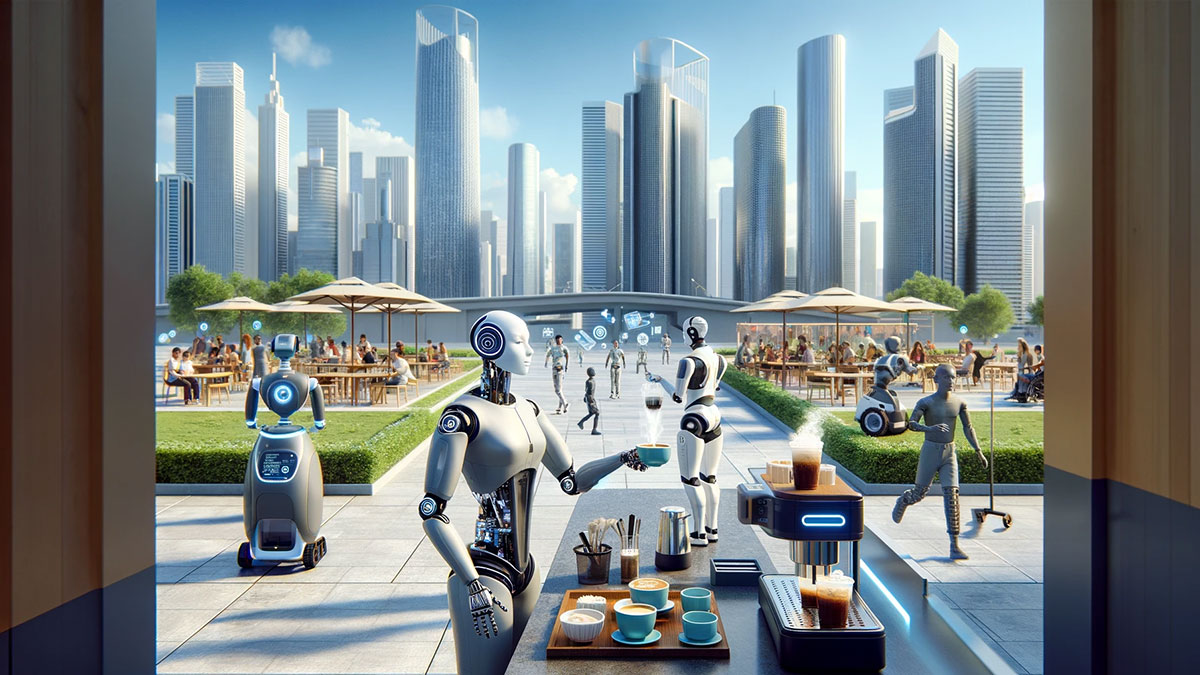E-commerce has drastically evolved since the 1960s, driven by the adoption of mobile technology. The shift to mobile-optimized shopping platforms highlights a trend towards more mobile-centric e-commerce in the future.
Additionally, the rise of artificial intelligence, from customer service chatbots to advanced predictive analytics, is set to further transform the shopping experience. While the future of e-commerce is uncertain, this article explores potential developments based on current trends and data, offering insights into what the next 50 years might hold.
As AI technology continues to advance, we may see even more sophisticated applications, such as predictive analytics that can anticipate a customer’s needs before they even realize it themselves.
Key Takeaways
- In 50 years, e-commerce will likely transform into AI-driven, hyper-personalized platforms, intuitively catering to individual consumer preferences.
- Virtual and augmented reality will become integral, offering immersive and interactive online shopping experiences.
- Blockchain technology will significantly enhance transaction security and transparency in e-commerce, fostering trust and efficiency.
Historical Progression of E-Commerce
E-commerce has come a long way since its inception, and the industry has witnessed significant growth and development over the years. This section provides an overview of the historical progression of e-commerce, highlighting the major milestones and advancements that have shaped the industry.
Initial Stages
The first e-commerce transaction dates back to 1971 when ARPANET, the precursor to the internet, was used to conduct a sale between Stanford University students. However, it was not until the 1990s that e-commerce began to gain traction, with the emergence of online marketplaces and the first e-commerce websites. In 1995, Amazon.com launched as an online bookstore, paving the way for the growth of e-commerce.
Rapid Growth Period
The rapid growth of e-commerce began in the early 2000s, with the emergence of new technologies such as mobile devices and social media. Online marketplaces such as eBay and Alibaba gained popularity, and traditional brick-and-mortar retailers began to move their businesses online. The introduction of payment gateways such as PayPal and the growth of online banking made it easier for consumers to make purchases online.
Current Status
Today, e-commerce is a thriving industry, with global online sales expected to reach $6.5 trillion by 2023. The industry has witnessed significant advancements in technology, including the use of Artificial Intelligence (AI) and Machine Learning (ML) to personalize the shopping experience for consumers. Mobile commerce has also gained popularity, with the majority of online purchases now being made through mobile devices.
The historical progression of e-commerce has been marked by significant advancements in technology and the emergence of new marketplaces and payment gateways. The industry has come a long way since its inception, and with the continued growth of technology, it is expected to evolve even further in the coming years.
Predicted Trends in E-Commerce
As technology continues to advance, the e-commerce industry is expected to undergo significant changes in the coming years. This section will explore some of the predicted trends in e-commerce that are expected to shape the industry in the next 50 years.
Increased Personalization
Personalization is becoming increasingly important in the e-commerce industry, and it is expected to continue to be a significant trend in the future. Online retailers are already using customer data to provide personalized product recommendations, and in the future, this trend is expected to expand. With the advancement of AI and machine learning, e-commerce platforms will be able to provide even more personalized experiences to customers.
Integration of Virtual Reality
Virtual reality is another technology that is expected to play a significant role in the future of e-commerce. With the integration of virtual reality, customers will be able to experience products in a more immersive way, which will help to increase sales. For example, customers will be able to try on clothes virtually or see how furniture would look in their home before making a purchase.
Expansion of Mobile Commerce
Mobile commerce is already a significant trend in the e-commerce industry, and it is expected to continue to grow in the future. As more people use their smartphones to shop online, e-commerce platforms will need to optimize their websites and apps for mobile devices. This includes making sure that the checkout process is easy to use on a mobile device and that the website is responsive to different screen sizes.
These are just a few of the predicted trends in e-commerce that are expected to shape the industry in the coming years. As technology continues to advance, we will likely see even more significant changes in the e-commerce landscape.
Potential Technological Innovations
As e-commerce continues to evolve, several technological innovations could shape its future. Here are some of the possible technologies to look forward to:
Artificial Intelligence
Artificial Intelligence (AI) is already being used by many e-commerce companies to personalize the shopping experience, provide product recommendations, and automate customer service. In the future, AI could become even more sophisticated, allowing e-commerce companies to anticipate customer needs and preferences before they even know it themselves.
One possible application of AI in e-commerce is the use of chatbots. Chatbots are computer programs that can simulate human conversation, allowing customers to get answers to their questions quickly and easily. As AI technology continues to improve, chatbots could become even more advanced, providing personalized recommendations based on a customer’s browsing history and preferences.
Blockchain Technology
Blockchain technology is already being used in the financial industry to secure transactions and prevent fraud. In the future, it could also be used in e-commerce to provide greater transparency and security.
One possible application of blockchain in e-commerce is the use of smart contracts. Smart contracts are self-executing contracts with the terms of the agreement between buyer and seller being directly written into lines of code. This could help to eliminate disputes between buyers and sellers, as the terms of the contract would be automatically enforced by the blockchain.
Advanced Analytics
Advanced analytics is already being used by many e-commerce companies to analyze customer data and improve the shopping experience. In the future, it could become even more sophisticated, allowing e-commerce companies to predict customer behavior and optimize their operations accordingly.
One possible application of advanced analytics in e-commerce is the use of predictive modeling. Predictive modeling uses statistical algorithms and machine learning techniques to analyze historical data and make predictions about future events. This could help e-commerce companies to anticipate customer needs and preferences, and optimize their marketing and sales strategies accordingly.
So these technological innovations do have the potential to transform the e-commerce industry in the coming years. By leveraging the power of AI, blockchain technology, and advanced analytics, e-commerce companies can provide a more personalized, secure, and efficient shopping experience for their customers.
The Future of Online Buying
With the advancement in technology, e-commerce is expected to reach new heights in the next 50 years. Here are some of the ways that online buying will become even more seamless, automated, and flexible.
Seamless Shopping Experience
In the future, online shopping will become even more seamless, with the use of technologies like virtual and augmented reality. Customers will be able to try on clothes and see how furniture looks in their homes before making a purchase. This will enhance the overall shopping experience and reduce the number of returns.
Retailers will also use machine learning to personalize the shopping experience for each customer. This will lead to more relevant product recommendations, personalized promotions, and a better shopping experience.
Automated Customer Service
In the future, customer service will become more automated, with the use of chatbots and AI-powered assistants. Customers will be able to get instant help with their queries and concerns, without having to wait for a human representative. This will reduce the response time and improve the customer experience.
Retailers will also use machine learning to predict and prevent issues before they occur. This will lead to fewer customer complaints, faster resolutions, and a better overall customer buying journey.
Flexible Payment Options
In the future, payment options will become more flexible, with the use of digital currencies and biometric authentication. Customers will be able to pay using their fingerprints or facial recognition, which will enhance the security and convenience of online transactions.
Retailers will also offer more payment options, including installment plans and pay-later options. This will make online shopping more accessible to a wider range of customers, especially those who cannot afford to pay the full amount upfront.
The future of online buying looks promising, with even further streamlined processes, automated customer service, and flexible payment options.


